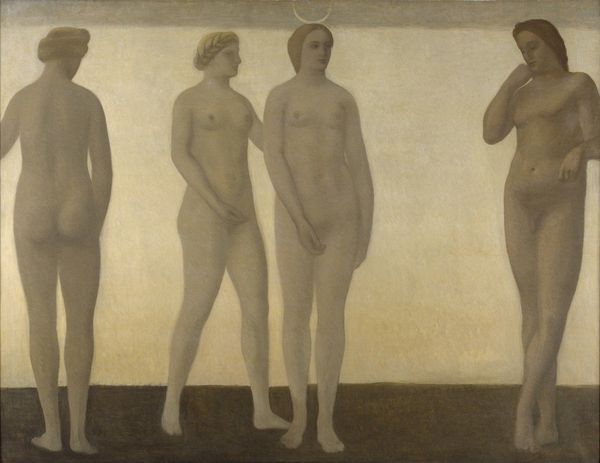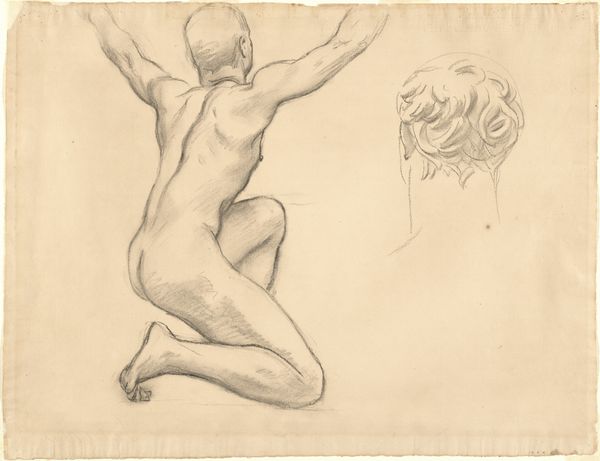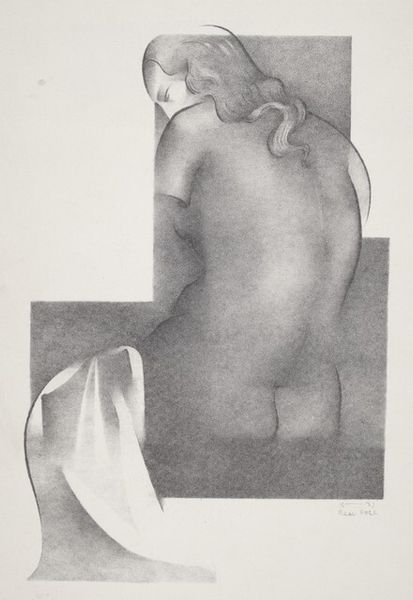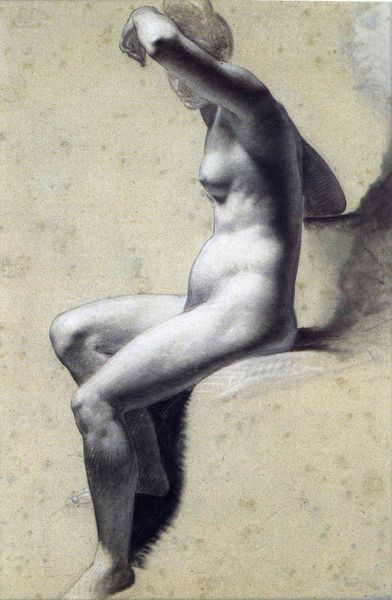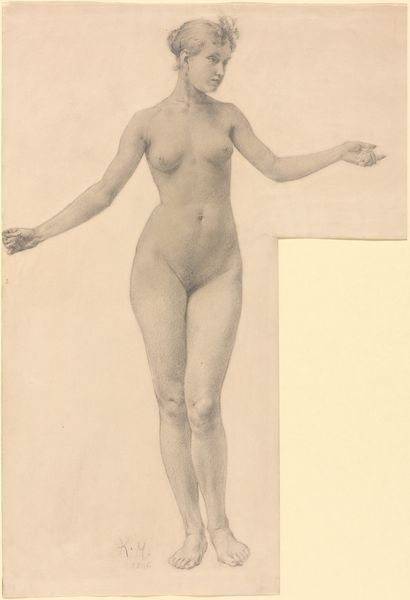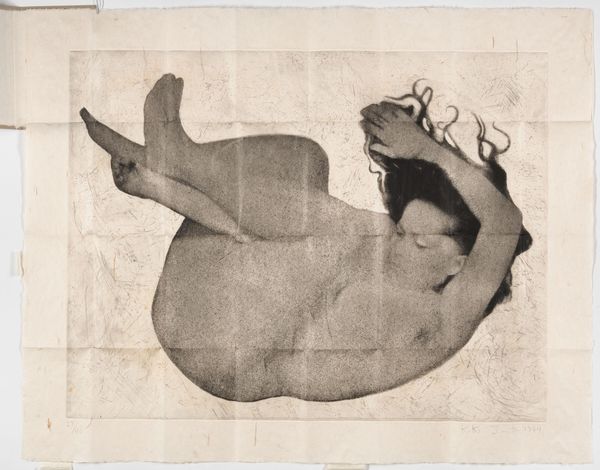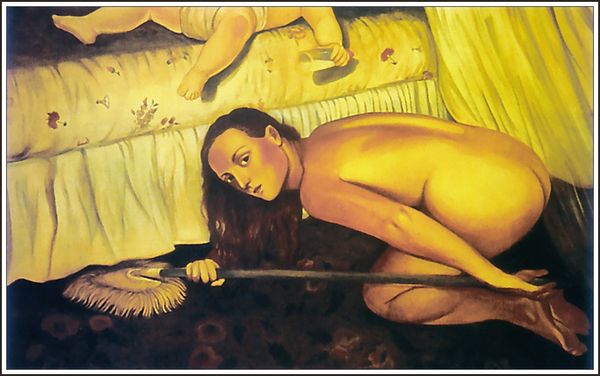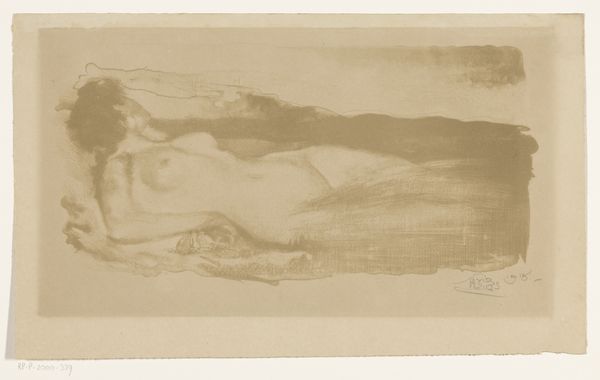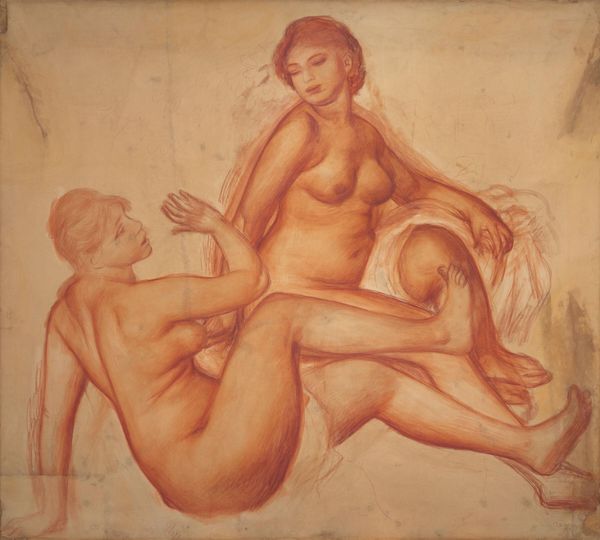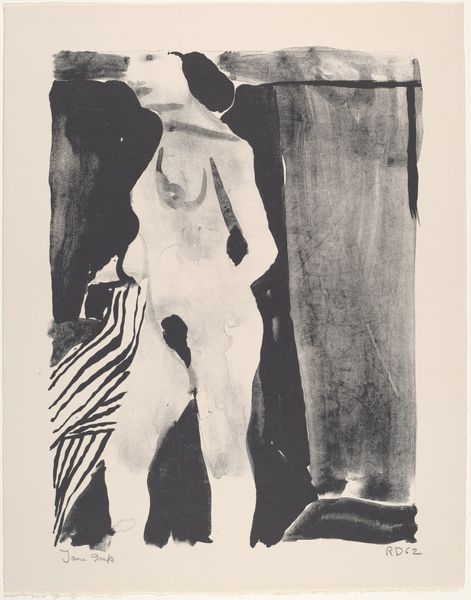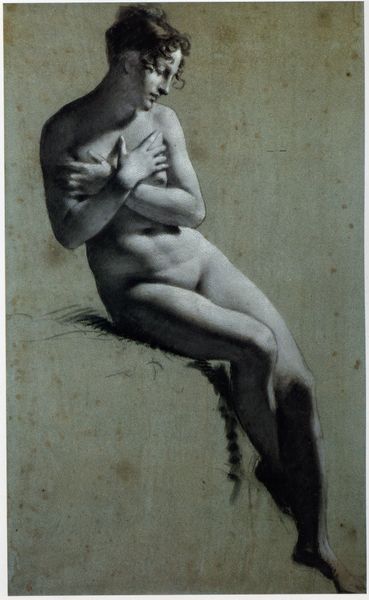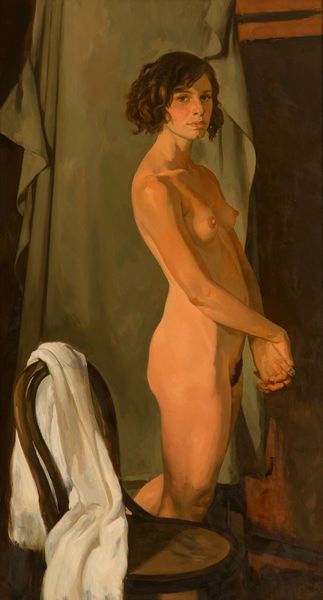
painting, watercolor
#
gouache
#
painting
#
figuration
#
watercolor
#
underpainting
#
history-painting
#
academic-art
#
nude
#
watercolor
Copyright: Public domain
Editor: Charles Gleyre's "Dance of the Bacchantes" seems to be an unfinished painting, probably done in watercolor and gouache. What strikes me is the detached, almost clinical way the figures are rendered against the blank canvas, like studies rather than a finished scene. What do you see in this piece? Curator: It’s fascinating to consider "Dance of the Bacchantes" through a socio-political lens. Academic art of this period, including Gleyre's, was often caught between tradition and burgeoning modern sensibilities. Bacchantes, figures associated with ecstatic abandon and female freedom in classical mythology, were a common subject. How does Gleyre present them here? Editor: They're strangely static, almost like posed models. There's no sense of wild abandon, and I am not really convinced this scene portrays female freedom at all. Curator: Exactly! This controlled depiction of such a historically charged subject tells us a great deal about the constraints of the artistic institutions and societal expectations of the time. The underpainting style further suggests that this might have been preparatory work, possibly for a larger, more ‘finished’ piece intended for public consumption. Do you see how even in its incompleteness, the artwork reflects the negotiations artists had to make between their creative impulses and the prevailing tastes? Editor: So, even unfinished, the painting can be read as a statement about the public perception, almost censorship, of female subjects during the time. The "Dance of the Bacchantes" is much more fascinating that I initially imagined! Curator: Precisely! By considering the cultural and institutional forces at play, we can gain a deeper understanding of the art's meaning, as well as its place in history. This exploration reveals so much about how social constructs shape art itself.
Comments
No comments
Be the first to comment and join the conversation on the ultimate creative platform.
